Genesis
At least three countries were interested in the 1950s by the new concept of oscillating turret: USA, France and Austria. The Austrian Army was largely equipped with US-supplied tanks like the M47 patton, reinforced some British Charioteers; So at first the army requirement asked for a tank hunter. Osterreichische Saurer-Werke from Vienna was contacted. The company (now part of Steyr-Daimler-Puch AG) already produced the ADGZ before the war and recently had gained a contract to equip the motorized units with an APC, the Saurer 4K 4FA, of which 445 were produced for the Army and many more exported. So the company naturally adopted its existing chassis, with many modifications. The question of the gun was crucial, as it has to be powerful enough to fill its antitank rôle, but the chassis was relatively light. Engineers turned to nearby France that already mass-produced the AMX-13 with an oscillating turret that precisely allowed to design an heavily-armed lightweight turret. As a consequence, when the SK-105 was produced and put in service it was the only other European tank featuring this concept.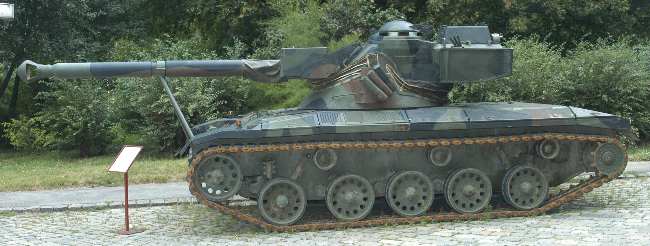
Design
The hull of the SK 105 was made of welded steel RHA and counted the driver\'s compartment at the front, fighting compartment and turret in the center and the rear engine compartment. Protection was light, up to 20 mm armor-piercing rounds over its frontal arc, but the sides, rear and other parts were only protected against small arms fire, like the APC. However add-on armor was made available for the glacis as an option (including for export), protectin up to 35 mm APDS rounds. The driver sat on the left, at his right were stored additional rounds for the main gun and the batteries. He could see through the three periscopes (the central can be swapped for a passive night vision sight) of his hatch cover and could receive a small windscreen with a wiper. The engine compartment was fitted with an automatic fire extinguisher with manual backup. A cyclone filter system provide the air flow motion.The turret was closely based on the French design and was initally armed with a local 105 mm G1 which was able to penetrate 360 mm of armor. It was oscillating, meaning the base was traversing while the entire upper part could elevate or depress, solidary with the gun. The commander sat on the left and had a seven periscopes rotatable cupola and a periscopic sight while the gunner on the right hand side. The TC infrared night sight has a magnification of x6. The gunner was given two periscopes and a telescopic sight with a lifting and swiveling hatch cover.
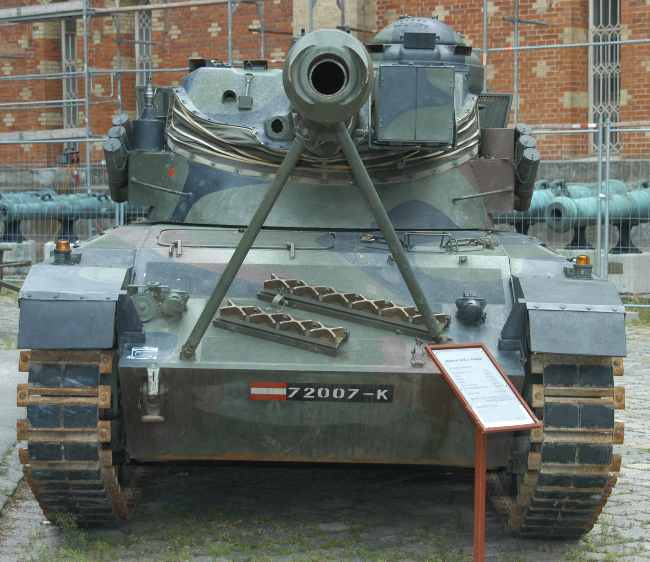
A CILAS TCV 29 laser rangefinder (with a range up to 9,995 m) was mounted on the turret\'s front roof section while a XSW-30-U 950 W infrared/white light searchlight was placed on the left of this section of the turret. The gun used a semi-automatic autoloader with a 6-rounds "barillet-type" magazine that eliminated the loader. In total total of 42 rounds were stored, but the barillets needed to be reloaded from outside. Spent cartridges cases were ejected through a turret hinged trapdoor and there was a fume exhaut vent on rear of the roof. Secondary armament comprised two 7.62 mm LMGs, one coaxial and one on the roof, optional.
For mobility the Kürassier counted on its lightweight hull and a Steyr 7FA/6-cylinder turbocharged diesel engine giving 320 hp (238 kW) for a power-to-weight ratio of 18 hp/ton. The hull reposed on five doubled roadwheels mated on torsion bar suspension and three return rollers. There was a greater gap between the first roadwheel and the others, and two shock aborbers, on the first and last suspension unit. The roadwheels were smaller than on the french model, allowing a smoothier ride and a lower profile. A raised sixth roadhweel served as idler or track tensioner at the front, and the drive sprockets were at the rear. Battlefied performances were as follows: Top speed of 70 kph (43 mph) on flat, gradient75%, side slope40%, vertical step 0.8 m, Trench 2.4 m, fording1 m, and an operational range of 500-550 kilometres (310 mi).
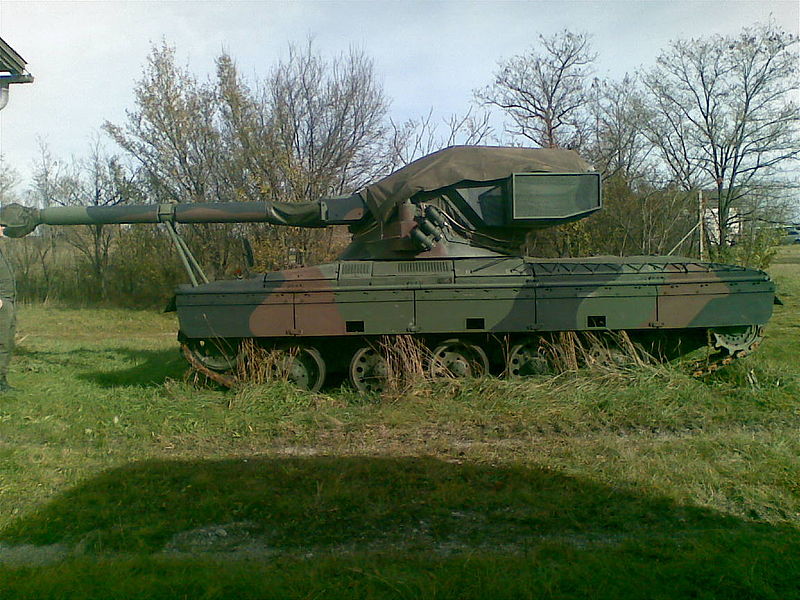
Production
An extimated total of 600-700 vehicles were produced by Saurer-Werk. This includes export vehicles. The kürassier was specifically designed for mountainous terrain and has improved capabilities due to its better power to weight ratio and agility than tanks. It could also be air transported by C-130 Hercules. However there were tradeoffs in the design, mirroring the similar AMX-13: The turret design meant thre could be no collective NBC for the crew, the rear basket was a recoignised potential shot-trap, and after the barillets were spent, the reloading process was external (until the A2), thus exposing the crew to enemy fire. Also, the main gun was non-stabilized (until the A3), meaning the vehicle must stop before firing accurately.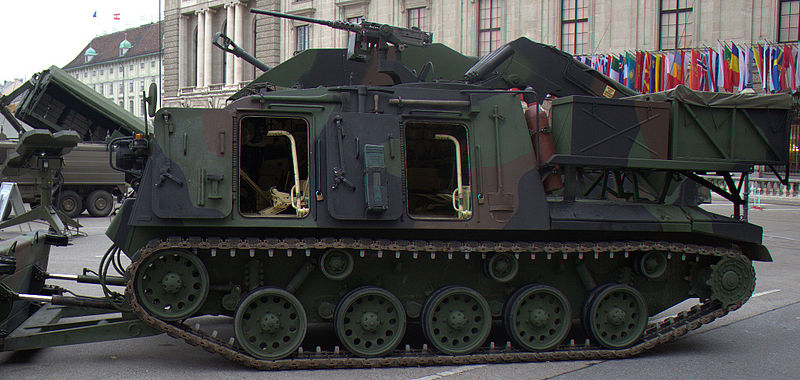
Variants
SK-105A1 New AP rounds, improved autoloader and FCSSK-105A2 New FCS and other minor improvements, fully automated ammunition loading system process
SK-105A3 Fully-stabilized US M68 105 mm (L7 derived) rifled gun, add-on armour and improved protection.
4K-7FA SB 20 Derived Greif armored recovery vehicle
4HK 7FA Engineering armoured vehicle
4KH 7FA-FA Driver training vehicle (no turret, superstructure for instructors).
Services & Exports
The Kürassier entered in servce in 1971 the Austrian army (234 to 286 vehicles) and remained so with until the 1990s. The rest were were exported, and most are still in service today. Argentina is the most prolific customer with 118 vehicles. These were modernized as the "Patagón", keeping the same chassis, but with a modernized AMX-13 turret. The prototype was presented in November 2005 and 39 conversions followed until 2009 (for 23.4 million US$). These were also Bolivia (54), Botswana (52), Brazil (17 for the Brazilian Marine Corps), Morocco (120), and Tunisia (55-80).Links
The Kürassier on wikipediaThe Kürassier on Military-today: Additional photos & data
1/35 blueprint and 4 view of the Sk-105
Video channel about the SK-105(youtube)
Video
From the "Kette und Rad" 2010 exhibition in Austria.
Gallery
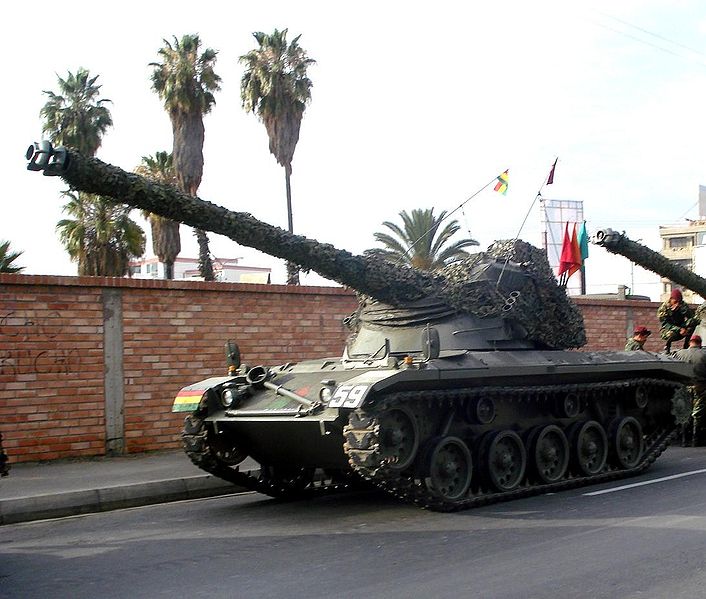
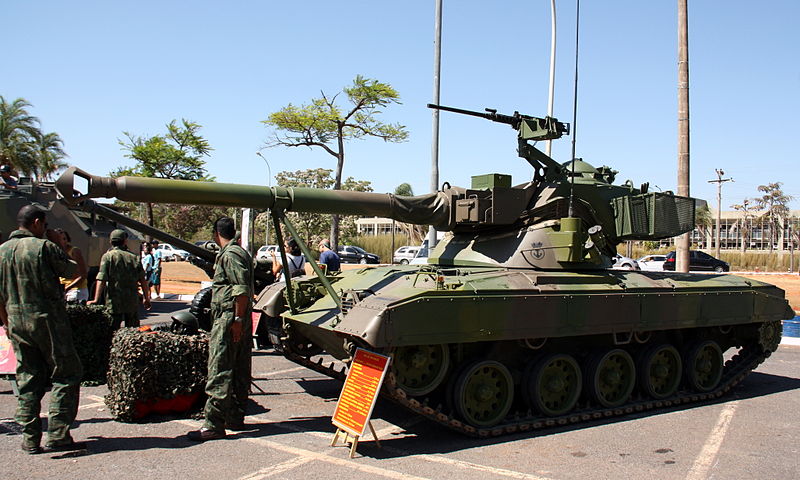
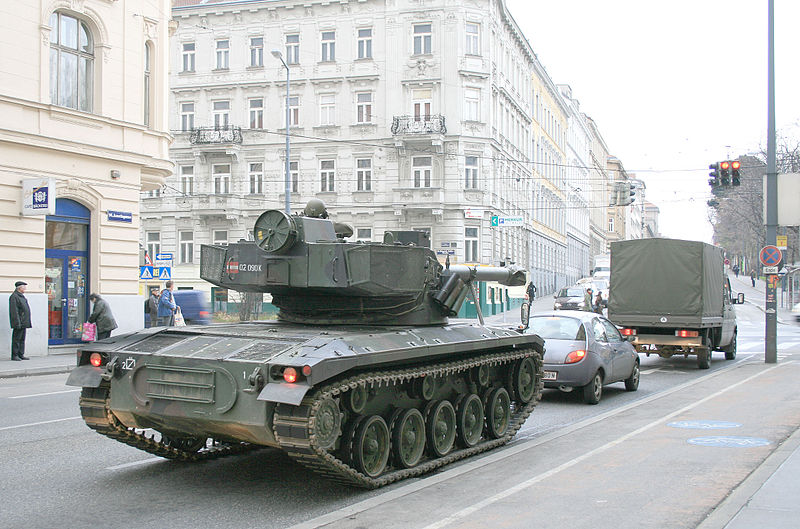
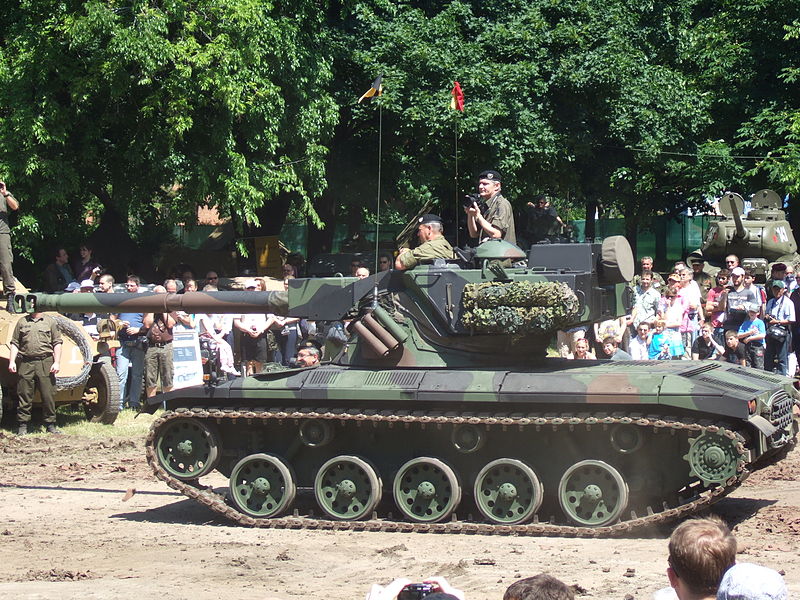
SK-105 specifications |
|
| Dimensions (l-w-h): | 5.58 (7.76 oa) x 2.5 x 2.88 m (18.4 x 8.2 x 9.5 fts.in) |
| Total weight, battle ready: | 17.7 Tons (?? ibs) |
| Crew : | 3 (Driver, Gunner, Commander) |
| Propulsion: | Steyr 7FA 6-cyl. TD 320 hp (238 kW) |
| Suspensions: | Torsion arms |
| Top Speed | 70 kph (43 mph) |
| Range (road) | 500 km (310 miles) 0 |
| Armament (see notes) | 105 mm rifled with 43 rounds (7 in), 2 x 7.62 mm LMGs |
| Armour | Hull nose and turret 40 mm (A2), sides and rear 10, bottom 8 mm |
| Total Production | 700 |

Austrian Kürassier of the early type in manoeuvers
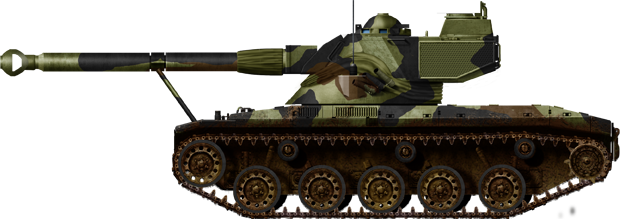
Austrian SK-105 A2 in the 1980s
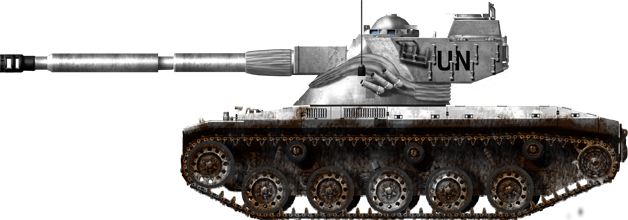
Argentine SK-105 A2 in peace keeping operations
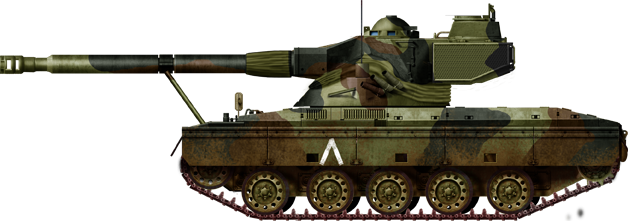
Argentine SK-105 A2 in peace-keeping operation with KFOR, 1992
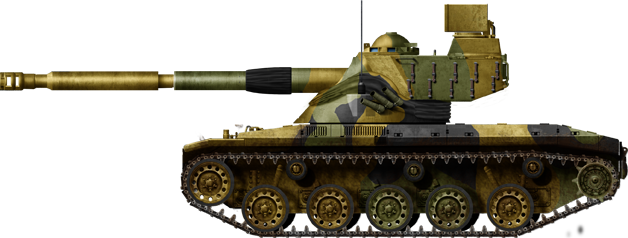
Austrian SK-105 A3, with improved FCS and a fully stabilized L-7 derived 105 mm.
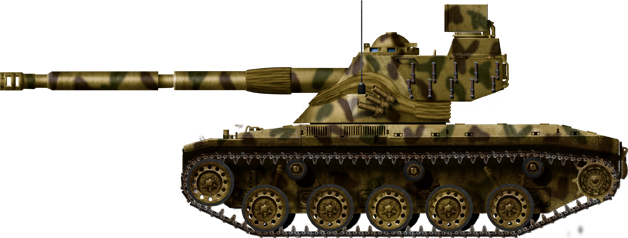
Tunisian Kürassier SK105A3 in the 1990s
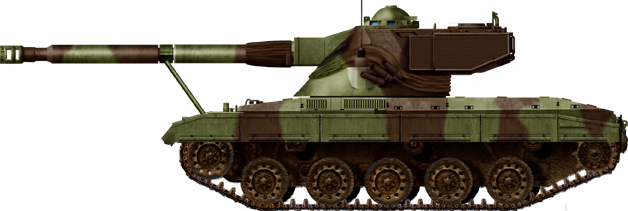
Brazilian Marines SK105A2S Kürassier
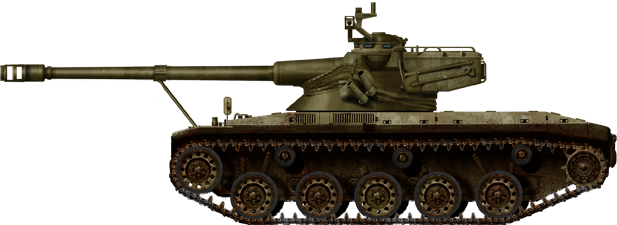
Argentine Patagón, 2010s.

Cold War Tanks


































Cold war tanks posters

Cold War Main Battle Tanks

Cold War Soviet Army
Museums, Movies, Books & Games
The Tanks and Armor in pop culture
Tanks and armored vehicles in general are only really grasped when seen first person: The mass, the scale, it's all there. Explore also the way tanks were covered in the movie industry, in books and in video games.Movies:
Best tanks movie on warhistoryonline.com
On imdb.com
On bestsimilar.com/
miltours.com
liveabout.com/
watchmojo.com
Video Games:
pcgamesn.com
historyhit.com
levvvel.com
vg247.com/best-tank-games
mmobomb.com/
alienwarearena.com

